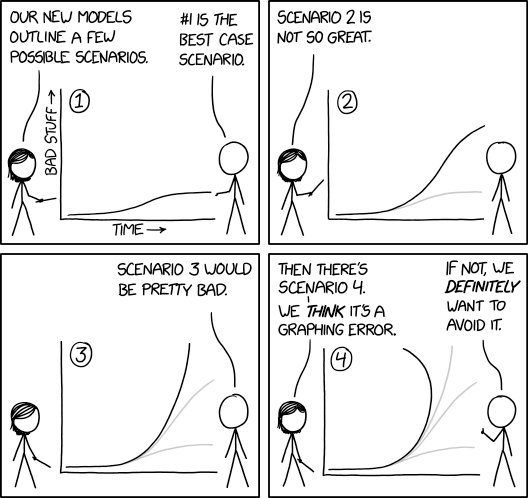My top 5 favourite COVID-19 related infographics
Information visualisations are the kind of union of art and science that make my heart happy.
There’s a daily flood of data produced by the COVID-19 data fire hydrant. Coming to grips with it is challenging and exhausting. Translating that data into meaningful, and sometimes actionable, information for a lay audience is not a task for the faint of heart.
Here are five organisations/artists doing that task to an unbelievably high standard.
Information is beautiful
David McCandless began experimenting with visualising information as a way to manage the information fire hydrant. Could he find a better way to see it and understand it, and make it more meaningful to us all?
The 2009 publication ‘Information is Beautiful’ was his first product of his foray into making information approachable and beautiful. It launched a website, another book and a business.
He and his team have been hard at work in these last few months. They’ve created data visualisations on COVID-19, which are well worth viewing.
The Corona Simulator
Do you remember when the phrase ‘flattening the curve’ was just a meaningless string of words? Well, back at that time when this phrase needed explanation, the Washington Post produced this sublime series of animated simulations.
Developed by graphics reporter Harry Stevens, these simulations demonstrate how a fictional virus (simulitis) transmits. They show how exponential growth in case numbers happens and how various interventions could work. You can see how strict quarantine, extreme social distancing and moderate social distancing slow the growth of case numbers.
Not only are these animations crystal clear, they are also randomly generated. Meaning, each time you view them they will turn out slightly differently.
Viruses Vs Everyone
Information visualisations are not limited to graphs and charts. Illustrations such as animations, comics or even live-action videos can help cut through any confusion.
One stellar example of this is the work of Toby Morris and Siouxsie Wiles. Combining quality science information and comic animations they gave us an excellent 3-part explanation of the coronavirus covering:
replication of the coronavirus, and viruses in general
how transmission happens
how transmission can be minimised
Morris and Wiles are based in New Zealand, where cases of COVID-19 have been curtailed. The containment efforts there were so effective, they needed to explain what epidemiologists mean when they say ‘elimination of COVID-19’.
A bit of fun
Sometimes a light-hearted take on some serious data is necessary. And if there was ever a time for some light, it’s now.
A few months ago, graphs like this “flattening the curve” graph started circulating on social media:
Pretty quickly, some clever wag decided to “translate” the graph using the universal language of the internet: cat images.
A bit more fun: the ever magnificent xkcd
Poignant, irreverent and always amusing, xkcd reigns as king of the STEM comic kingdom. Science lovers (nerds) everywhere have loved this comic forever. Created by Randall Munroe, a physicist with a penchant for doodling, these comics are amusing takes on science, maths, astrophysics, philosophy and language.
Do spend some time on his site. You can also grab some of his work in book form: check out What If and Thing Explainer.
What are some of your favourite data visualisations?
Sally Bathgate is a freelance medical writer with a decade of experience in research and the pharmaceutical industry in Australia.




